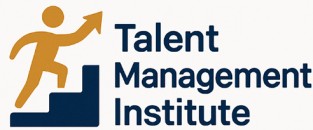Understanding Applicant Tracking Systems (ATS)
Decoding the Functionality of ATS Platforms
Applicant Tracking Systems, commonly referred to as ATS, revolutionize the hiring process for talent management. These systems enhance recruitment by maintaining digital records of candidates—streamlining the tracking and organization these records require. This digital approach aids employers and recruiters in effectively managing the vast number of resumes and applications received during recruitment drives.
ATS platforms integrate several components to support hiring managers in the recruitment process. They are designed to store, track, and manage candidate data, providing a centralized database for easy access and retrieval. This accessibility simplifies job interviews and resume parsing, ensuring that applicant resumes are holistically evaluated.
The systems support various recruitment processes by enabling process automation, enhancing not only the candidate experience but also the overall talent acquisition strategy. With ATS, recruiters can efficiently manage and track applications throughout the recruitment journey—performing tasks such as interview scheduling with minimal effort.
Furthermore, the software aids in employer branding by allowing hiring managers to identify and engage with top talent seamlessly. By organizing candidate data and streamlining the tracking process through these advanced systems, organizations can focus on refining their recruitment strategies and elevating their talent management approach.
The Role of Digital Records in ATS
Streamlining the Candidate Journey with Efficient Data Handling
In the bustling world of recruitment, the digital records maintained by Applicant Tracking Systems (ATS) play a pivotal role. These records go beyond traditional resumes and delve into a comprehensive analysis of candidates’ qualifications, by efficiently organizing and storing every detail. It is crucial that systems like these enhance the hiring process while providing a seamless experience for both applicants and recruiters.
By utilizing ATS platforms, hiring managers can efficiently track an applicant's journey from application submission to job placement. With digital records, recruitment processes become streamlined, allowing for quick resume parsing and data analysis. The ability to maintain a well-organized repository of candidate information ensures that recruiters can pinpoint top talent and expedite the recruitment process.
Moreover, these systems contribute positively to employer branding by enhancing the overall candidate experience. Candidates appreciate a streamlined ATS process, reducing time spent during the hiring process, and increasing satisfaction.
Efficient digital record keeping not only supports the recruitment process but also safeguards candidate data. ATS platforms focus on maintaining the security, ensuring that sensitive information about applicants and jobs is securely managed. By prioritizing candidate privacy, these systems align with broader security practices.
For more insights, you might want to explore how strategic processes like
enhancing marketing sales forecasting through strategic spend management can play a part in translating ATS efficiencies into broader business strategies.
Benefits of Keeping Digital Records
Advantages of Digital Record Keeping in ATS
In an increasingly competitive job market, Applicant Tracking Systems (ATS) are evolving to maximize efficiency and enhance the hiring process. One significant development within these systems is the effective maintenance of digital records of candidates, which offers a myriad of advantages for recruiters and hiring managers.
Firstly, digital records streamline the recruitment process by providing a centralized location for all candidate data. This facilitates easy access to resumes, application materials, and communication history during job interviews, ensuring that recruiters can evaluate applicants with a comprehensive view of their credentials. Enhanced resume parsing capabilities allow ATS platforms to efficiently organize and classify application information, which reduces time spent on manual data entry and management.
Moreover, digital records improve the candidate experience by enabling smoother interview scheduling. By keeping track of all interactions and movements through the recruitment process, Applicants are ensured a more transparent and personalized experience, crucial for bolstering an organization’s employer branding. This is especially important for attracting top talent, as candidates are more likely to be drawn towards a company that respects their time and effort.
Beyond operational improvements, digital record keeping in ATS systems enhances security and privacy. It ensures that sensitive candidate data is protected, adhering to data protection regulations while maintaining trust with job seekers. This level of security is a fundamental part of building a robust talent acquisition strategy.
In conclusion, by maintaining digital records, ATS platforms not only enhance the recruitment process but also enable companies to uphold a professional, candidate-friendly approach in finding the right fit for their roles. This is a crucial step for organizations aiming to refine their recruitment processes and secure the best possible candidates for their teams.
Privacy and Security Concerns
Addressing Privacy and Security in Digital Records
When it comes to applicant tracking systems (ATS), privacy and security of candidate data are paramount. Maintaining digital records involves the collection and storage of extensive information about candidates, such as resumes, interview schedules, and candidate interactions throughout the recruitment process. This level of data handling requires stringent security measures to prevent breaches and protect sensitive information from unauthorized access.
In hiring processes, the reputation of recruitment platforms and employer branding heavily depend on how well they handle candidate data. A breach not only risks sensitive personal information but can also tarnish an organization's image, making it challenging to attract top talent. Hence, ensuring data privacy and employing robust security protocols in ATS platforms are essential aspects of effective talent management.
ATS software typically incorporates several layers of security to safeguard digital records. These may include encryption, regular software updates, access controls, and compliance with data protection regulations like the General Data Protection Regulation (GDPR) or the California Consumer Privacy Act (CCPA). Hiring managers and recruiters need to be constantly vigilant and adapt to new security threats to keep the recruitment process safe and secure.
Furthermore, candidates entrust their personal information to these systems, relying on their potential employers to protect it. The confidence related to privacy within ATS also contributes significantly to a positive candidate experience. As recruiters enhance their systems ats, they must also focus on clear communication with candidates regarding data usage. This transparency assures candidates that their information is handled responsibly during job applications.
In conclusion, as organizations continue to rely on applicant tracking systems for candidate management and recruitment processes, addressing privacy and security concerns becomes an integral part of their operational responsibilities. This enhances not only the reliability of the digital records but also the overall efficiency of the recruitment process, ensuring a reliable and secure experience for both employers and applicants alike.
Impact on Talent Management
Driving Talent Management with Enhanced Candidate Experiences
In today's competitive job market, applicant tracking systems (ATS) have become indispensable tools for organizations aiming to attract and retain top talent. These systems offer a streamlined recruitment process by effectively managing candidate data and enhancing the overall experience of candidates.
By maintaining comprehensive digital records of applicants, ATS platforms empower hiring managers and recruiters with the insights necessary to make informed decisions. This level of record keeping ensures that each candidate's journey through the hiring process is not only documented but optimized for efficiency.
Moreover, digital records facilitate seamless resume parsing and interview scheduling, thereby saving time and effort for both recruiters and candidates. By creating a more organized and efficient hiring process, ATS platforms help foster a positive candidate experience, which is a key component of successful talent acquisition and employer branding.
However, it's crucial to address privacy and security concerns related to digital record keeping. Ensuring the protection of candidate data not only builds trust but solidifies the organization's reputation as a responsible employer.
Overall, the integration of digital records within ATS systems allows companies to focus on strategic tasks while enhancing their recruitment processes, ultimately leading to a stronger talent management framework.
Future Trends in ATS and Digital Record Keeping
Future Developments Shaping ATS and Digital Records
The world of Applicant Tracking Systems (ATS) is continually shifting to meet the demands of modern talent management. As we look ahead, several emerging trends are likely to play a pivotal role in how these systems and their digital record-keeping capabilities evolve.
One significant trend is the integration of artificial intelligence (AI) and machine learning into ATS platforms. These technologies enhance the recruitment process by automating routine tasks such as resume parsing and interview scheduling, allowing recruiters to focus on strategic decisions. AI-driven ATS systems can analyze candidate data and deliver insights that refine applicant tracking and reduce the time to hire.
Moreover, advances in big data and analytics are expected to bring a deeper understanding of candidate behaviors. By leveraging analytics, hiring managers can optimize their hiring process by identifying patterns in candidate interactions and improving the overall candidate experience.
Cloud-based systems are also on the rise, offering enhanced flexibility and access to data in real-time. This shift not only aids in maintaining secure digital records but also supports remote and distributed teams by making essential information accessible from anywhere.
Security remains a key concern for organizations. As digital footprints grow, systems must ensure data protection and privacy to build trust with candidates. Future ATS solutions are likely to incorporate advanced security features that keep sensitive candidate data safe while complying with international privacy regulations.
Finally, the ongoing evolution of ATS software has the potential to significantly impact employer branding. By streamlining the recruitment process and enhancing the candidate experience, companies can attract top talent more effectively, ensuring they remain competitive in the ever-changing job market.
Staying informed about these developments will be crucial for organizations eager to maintain efficient recruitment processes and offer an exceptional candidate experience.













